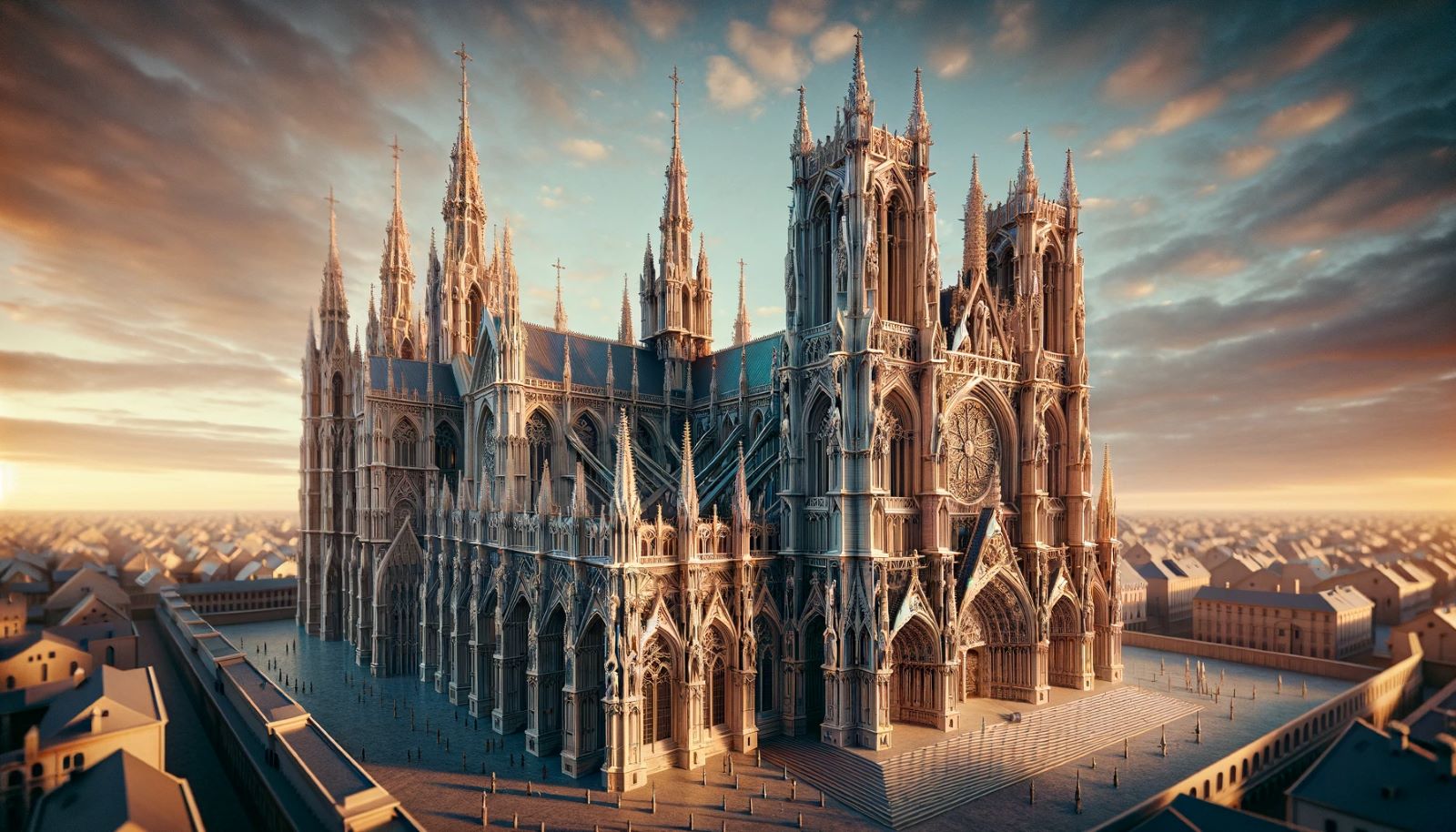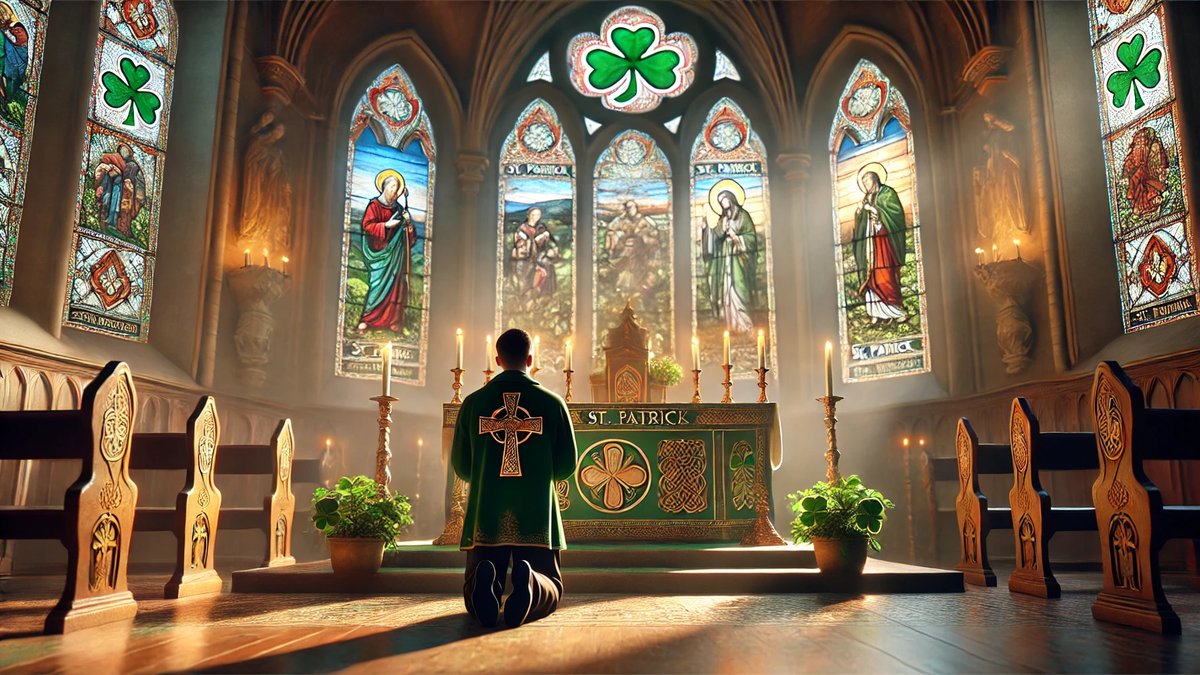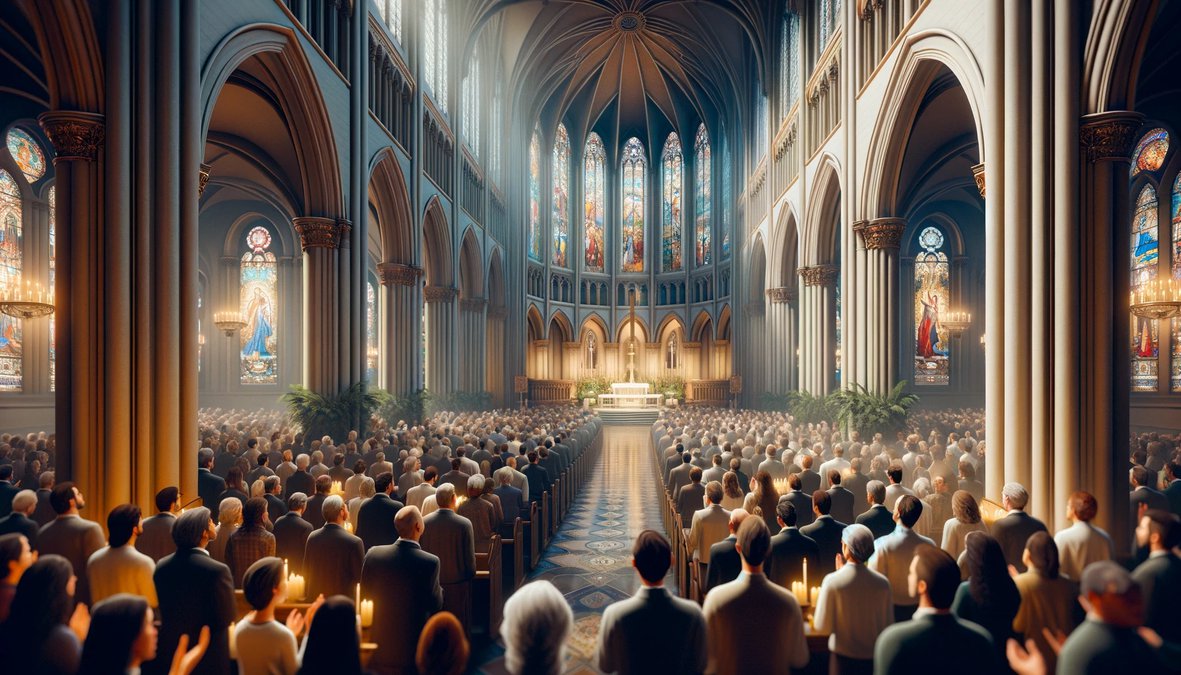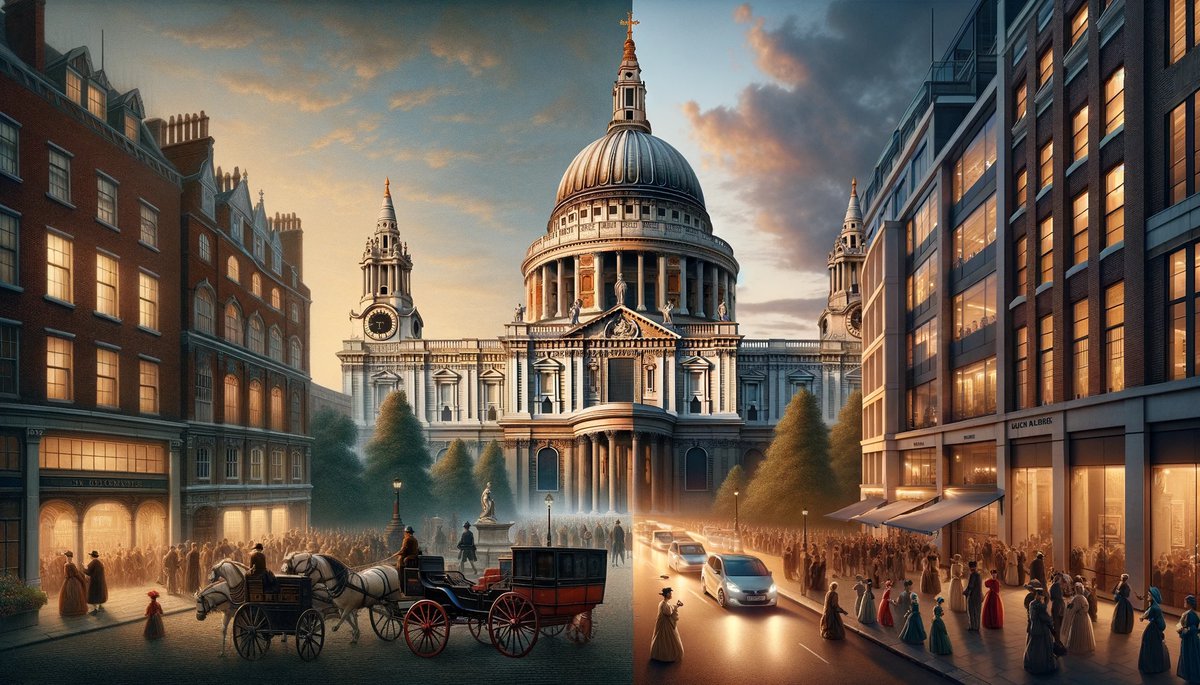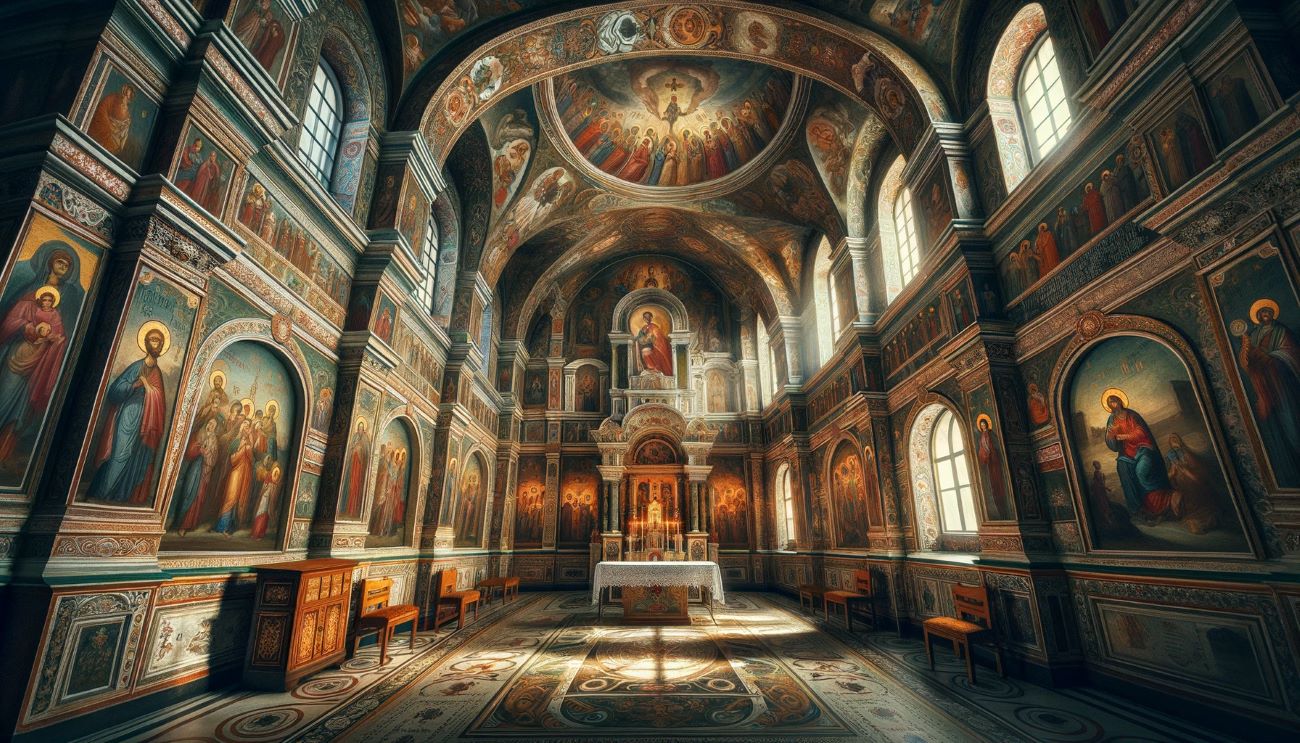Home>Arts and Culture>What Denomination Is St. Patrick’s Cathedral In Dublin?
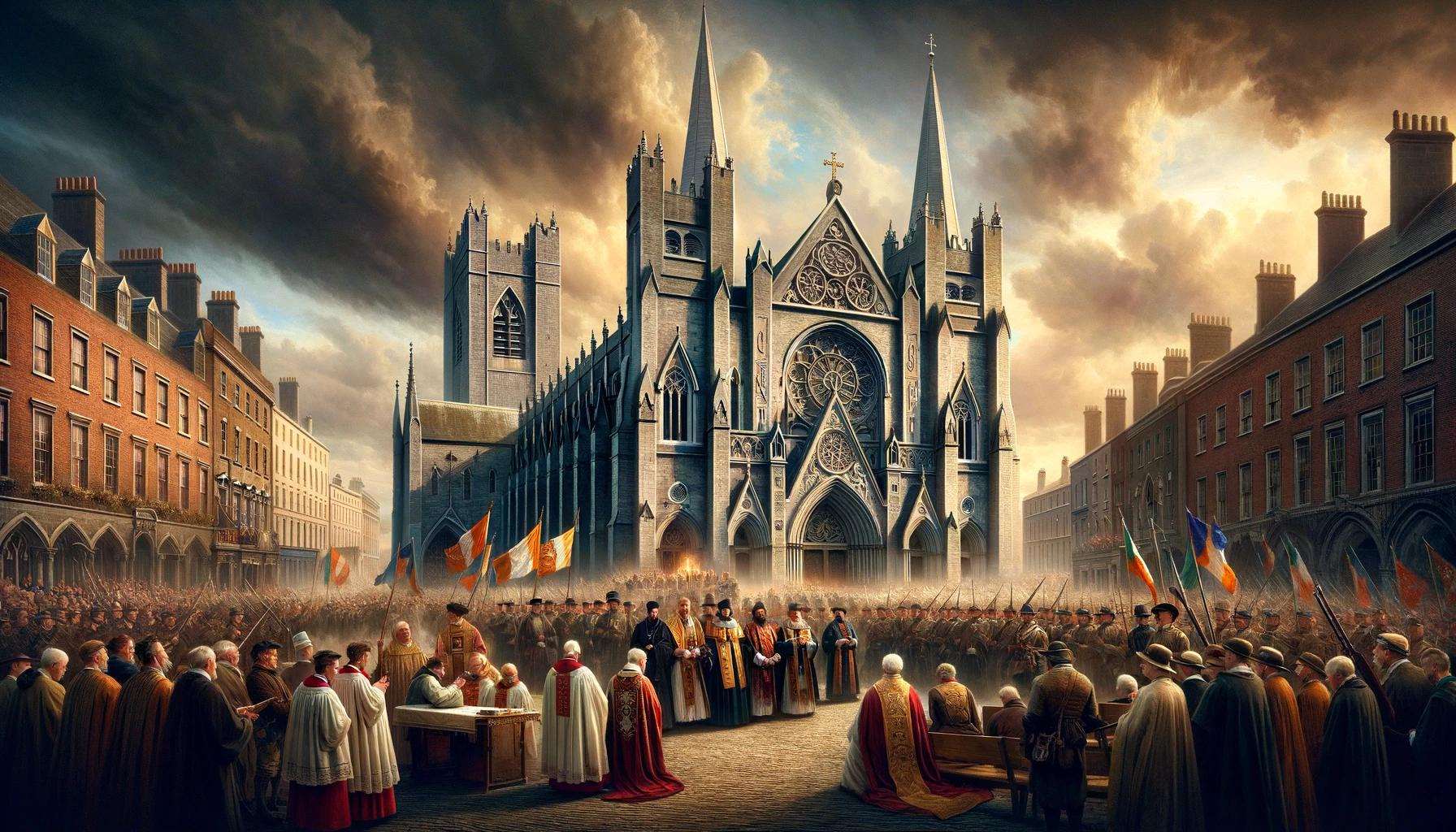

Arts and Culture
What Denomination Is St. Patrick’s Cathedral In Dublin?
Published: February 15, 2024
Jason DeRose, Managing Editor at Christian.net, uses his expertise in religion and journalism to deepen understanding of faith's societal impacts. His editorial leadership, coupled with a strong academic background, enriches the platform’s diverse content, earning him recognition in both journalism and religious circles.
St. Patrick's Cathedral in Dublin is an iconic landmark of the arts and culture scene. Discover the denomination and rich history of this historic cathedral.
(Many of the links in this article redirect to a specific reviewed product. Your purchase of these products through affiliate links helps to generate commission for Christian.net, at no extra cost. Learn more)
Table of Contents
Introduction
St. Patrick's Cathedral in Dublin stands as a magnificent testament to Ireland's rich cultural and religious heritage. This iconic structure, with its soaring spires and intricate architecture, has long been a symbol of spiritual devotion and architectural grandeur. As one of the most recognizable landmarks in Dublin, St. Patrick's Cathedral draws visitors from around the world, captivating them with its historical significance and awe-inspiring beauty.
The cathedral's roots are deeply intertwined with the history of Dublin, dating back to the 5th century when St. Patrick himself is said to have baptized converts to Christianity at a nearby well. Over the centuries, the site evolved into a place of worship, eventually becoming the location for the grand cathedral that stands today. Its enduring presence serves as a living testament to the enduring legacy of St. Patrick and the enduring influence of Christianity in Ireland.
St. Patrick's Cathedral is not merely a physical structure; it embodies the spirit of a nation and the resilience of a people. Its hallowed halls have borne witness to pivotal moments in Irish history, serving as a sanctuary, a place of reflection, and a beacon of hope through times of triumph and adversity. The cathedral's significance extends beyond its religious role, encompassing cultural, historical, and architectural dimensions that continue to inspire and captivate all who set foot within its sacred precincts.
As we delve into the history, denomination, and importance of St. Patrick's Cathedral, we embark on a journey that transcends time and space, delving into the heart of Dublin's cultural tapestry and the enduring legacy of one of Ireland's most cherished landmarks. Join us as we unravel the captivating story of St. Patrick's Cathedral, a testament to faith, resilience, and the enduring power of human creativity and devotion.
History of St. Patrick's Cathedral
St. Patrick's Cathedral in Dublin boasts a storied history that intertwines with the very fabric of Ireland's cultural and religious narrative. The origins of this iconic structure can be traced back to the 5th century, a time when St. Patrick, the patron saint of Ireland, is believed to have baptized converts to Christianity at a well located near the site of the present-day cathedral. This sacred act marked the beginning of a spiritual legacy that would shape the destiny of the Irish people for centuries to come.
The evolution of the cathedral's physical presence began in the 12th century when a wooden church was erected on the site. This early structure was later replaced by a stone building, which eventually gave way to the grand edifice that stands today. The cathedral's architectural evolution reflects the passage of time and the enduring influence of Christianity in Ireland.
Throughout its long and tumultuous history, St. Patrick's Cathedral has weathered periods of prosperity and adversity, emerging as a symbol of resilience and spiritual fortitude. It has witnessed pivotal moments in Irish history, serving as a sanctuary during times of conflict and upheaval. The cathedral's walls bear witness to the ebb and flow of the nation's fortunes, embodying the collective memory of a people who have sought solace and inspiration within its hallowed confines.
The cathedral's significance extends beyond its religious function, encompassing cultural and historical dimensions that resonate with visitors and locals alike. Its architectural splendor, characterized by soaring spires and intricate stonework, stands as a testament to the ingenuity and craftsmanship of generations past. Each stone, each archway, and each stained glass window tells a story of artistic expression and unwavering devotion.
As a focal point of Dublin's cultural landscape, St. Patrick's Cathedral continues to inspire awe and reverence, drawing visitors from around the globe to marvel at its timeless beauty and historical resonance. It stands as a living testament to the enduring legacy of St. Patrick and the enduring influence of Christianity in Ireland, inviting all who enter its sacred precincts to partake in a journey through time and faith.
The history of St. Patrick's Cathedral is a tapestry woven with threads of faith, resilience, and the indomitable spirit of the Irish people. It serves as a living testament to the enduring legacy of St. Patrick and the enduring influence of Christianity in Ireland, inviting all who enter its sacred precincts to partake in a journey through time and faith.
Denomination of St. Patrick's Cathedral
St. Patrick's Cathedral in Dublin is a prominent landmark that holds deep religious significance within the Christian tradition. As the largest cathedral in Ireland, it serves as the National Cathedral of the Church of Ireland, a denomination that is part of the Anglican Communion. The Church of Ireland, also known as the Anglican Church in Ireland, traces its roots back to the Reformation era and is an integral part of Ireland's religious landscape.
The denomination of St. Patrick's Cathedral as part of the Church of Ireland reflects the historical and cultural complexities that have shaped Ireland's religious identity. The cathedral's affiliation with the Anglican Communion underscores its position within the broader context of the global Anglican tradition, which encompasses a diverse array of worship practices, theological perspectives, and cultural expressions.
The Church of Ireland, as a denomination, embodies a rich tapestry of religious heritage, drawing from the traditions of Anglicanism while also reflecting the unique historical and cultural dynamics of Ireland. Its presence within St. Patrick's Cathedral underscores the cathedral's role as a focal point for Anglican worship, community engagement, and spiritual reflection.
The denomination of St. Patrick's Cathedral as part of the Church of Ireland is not merely a reflection of religious affiliation; it also carries profound historical and cultural significance. The cathedral's ties to the Church of Ireland speak to the enduring legacy of Christianity in Ireland and its multifaceted impact on the nation's social, political, and artistic spheres.
Visitors to St. Patrick's Cathedral have the opportunity to immerse themselves in the rich traditions of the Church of Ireland, experiencing the interplay of faith, history, and architectural grandeur within the cathedral's sacred precincts. The denomination of the cathedral serves as a testament to the enduring influence of Christianity in Ireland and its capacity to inspire and unite people from diverse backgrounds.
In essence, the denomination of St. Patrick's Cathedral as part of the Church of Ireland encapsulates the cathedral's role as a living testament to the enduring legacy of faith, cultural heritage, and the unyielding spirit of the Irish people. It stands as a beacon of religious devotion and historical continuity, inviting all who enter its hallowed halls to partake in a journey through the annals of Ireland's religious and cultural narrative.
Importance of St. Patrick's Cathedral in Dublin
St. Patrick's Cathedral in Dublin holds profound importance as a cultural, historical, and spiritual landmark, weaving together the threads of Ireland's rich heritage and serving as a testament to the enduring legacy of faith and resilience. Its significance transcends mere architectural grandeur, encompassing a myriad of dimensions that resonate with visitors and locals alike.
Cultural Significance
The cathedral stands as a living repository of Ireland's cultural identity, embodying centuries of artistic expression, architectural ingenuity, and communal devotion. Its soaring spires and intricate stonework reflect the craftsmanship of generations past, offering a tangible link to Ireland's artistic heritage. The cathedral's cultural resonance extends beyond its physical structure, permeating the collective consciousness of the nation and serving as a touchstone for artistic inspiration and cultural pride.
Historical Legacy
St. Patrick's Cathedral bears witness to pivotal moments in Irish history, serving as a silent sentinel through times of triumph and adversity. Its hallowed halls have provided sanctuary during periods of conflict, offering solace and hope to generations of Dubliners. The cathedral's walls echo with the echoes of the past, preserving the collective memory of a nation and bearing testament to the enduring spirit of the Irish people.
Spiritual Sanctuary
As the National Cathedral of the Church of Ireland, St. Patrick's Cathedral holds a central place within Ireland's religious landscape. It serves as a place of worship, spiritual reflection, and communal gathering, inviting individuals from all walks of life to partake in moments of contemplation and prayer. The cathedral's spiritual significance transcends denominational boundaries, offering a sacred space for all who seek solace, inspiration, and connection with the divine.
Architectural Grandeur
The cathedral's architectural splendor captivates the imagination, drawing admirers from around the world to marvel at its timeless beauty. Each stone, archway, and stained glass window tells a story of artistic expression and unwavering devotion, inviting visitors to immerse themselves in the interplay of light, space, and sacred symbolism. St. Patrick's Cathedral stands as a testament to human creativity and the enduring power of architectural innovation, inspiring awe and reverence in all who behold its majestic form.
Uniting Symbol
Above all, St. Patrick's Cathedral serves as a unifying symbol, bringing together people of diverse backgrounds and beliefs in a shared appreciation for Ireland's cultural and spiritual heritage. Its inclusive ethos transcends religious divides, fostering a sense of unity and shared purpose among all who gather within its sacred precincts. The cathedral stands as a beacon of hope, resilience, and cultural continuity, inviting all to partake in a journey through the annals of Ireland's rich and storied history.
In essence, the importance of St. Patrick's Cathedral in Dublin extends far beyond its physical presence; it embodies the soul of a nation and the enduring spirit of a people. Its cultural, historical, and spiritual significance weaves a tapestry of inspiration and reverence, inviting all who enter its hallowed halls to partake in a timeless journey through the heart of Ireland's cultural and religious narrative.
Read more: Why Is St. Patrick’s Cathedral Famous
Conclusion
In conclusion, St. Patrick's Cathedral in Dublin stands as a testament to the enduring legacy of faith, resilience, and cultural heritage. Its rich history, denomination as the National Cathedral of the Church of Ireland, and multifaceted importance underscore its profound impact on Ireland's cultural and religious landscape. As a living repository of Ireland's cultural identity, the cathedral embodies centuries of artistic expression, architectural ingenuity, and communal devotion. Its soaring spires and intricate stonework reflect the craftsmanship of generations past, offering a tangible link to Ireland's artistic heritage.
The cathedral's historical significance is palpable, bearing witness to pivotal moments in Irish history and serving as a spiritual sanctuary during times of turmoil. Its walls echo with the collective memory of a nation, preserving the enduring spirit of the Irish people. As the National Cathedral of the Church of Ireland, St. Patrick's Cathedral holds a central place within Ireland's religious landscape, inviting individuals from all walks of life to partake in moments of contemplation and prayer.
Moreover, the architectural grandeur of St. Patrick's Cathedral continues to captivate the imagination of visitors, drawing admirers from around the world to marvel at its timeless beauty. Each stone, archway, and stained glass window tells a story of artistic expression and unwavering devotion, inviting visitors to immerse themselves in the interplay of light, space, and sacred symbolism.
Above all, St. Patrick's Cathedral serves as a unifying symbol, bringing together people of diverse backgrounds and beliefs in a shared appreciation for Ireland's cultural and spiritual heritage. Its inclusive ethos transcends religious divides, fostering a sense of unity and shared purpose among all who gather within its sacred precincts.
In essence, St. Patrick's Cathedral stands as a beacon of hope, resilience, and cultural continuity, inviting all to partake in a timeless journey through the heart of Ireland's cultural and religious narrative. Its enduring presence serves as a reminder of the enduring legacy of St. Patrick and the enduring influence of Christianity in Ireland, inspiring awe and reverence in all who behold its majestic form.




